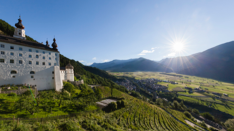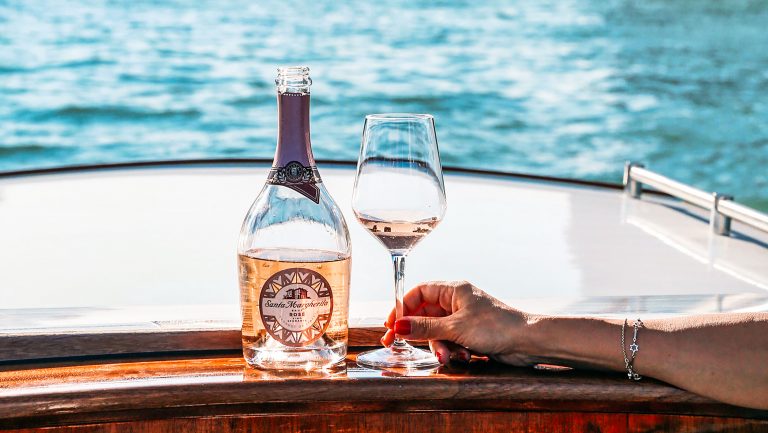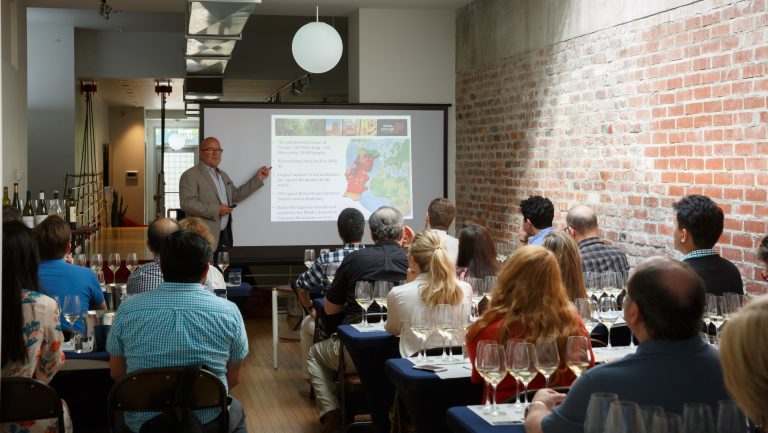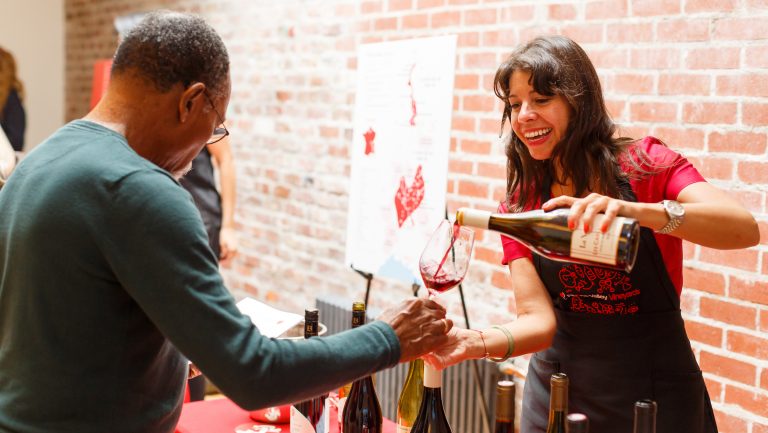This advertising content was produced in collaboration with our sponsor, Südtirol Wein Vini Alto Adige; it does not necessarily reflect the views of SevenFifty Daily’s editorial team. For more information, please refer to our ethics guidelines.
Tucked into the foothills of the Alps, the picturesque region of Alto Adige in northern Italy is a study in contrasts. With cooling Alpine influences that meet Mediterranean warmth and resplendent sunshine, and wine-growing elevations that extend from 600 to almost 3,300 feet, this humble region has a little bit of everything—and it uses those natural resources to make a wide array of red and white wines.
Not only does Alto Adige produce some of the finest versions of international varieties like Pinot Grigio, Sauvignon Blanc, and Pinot Noir, but it is also home to intriguing native varieties like Schiava and Lagrein. Despite accounting for a small proportion of Italy’s wine, the more than 200 wineries in Alto Adige are committed to the production of premium-quality wines.

Don’t miss the latest drinks industry news and insights. Sign up for our award-winning newsletters and get insider intel, resources, and trends delivered to your inbox every week.
“Alto Adige accounts for less than 1 percent of the wine made in Italy,” says May Matta-Aliah, DipWSET, CWE, a wine consultant who is based in New York City and is the U.S. brand ambassador for the Wines of Alto Adige consortium. “There was an understanding [that developed in Alto Adige] in the 1980s that quality is key. [Winemakers are] incentivized by quality and ripeness.”

Though quality is a priority—98 percent of the area is classified as DOC or DOP, while 89 percent of the wine is produced under the designations—the wines of Alto Adige remain relatively affordable. “The price-value relationship, even for Italy, is really high,” says Tim Gaiser, MS, a wine consultant based in Rio Rancho, New Mexico. “Value, to me, is the thing that speaks the loudest.” Combining perfectly sun-ripened fruit with bright acidity across an array of styles, the wines of Alto Adige may seem too good to be true—but the proof is in the glass.
Understanding the Region’s Terroir
Alto Adige is one of the oldest wine-growing regions in Europe, with archeological evidence like ancient pruning hooks and ladles indicating that cultivation in the area dates back at least 2,500 years. Bordering both Austria and Switzerland, the region has a long and storied history that still influences its culture and its wines today. Though it’s been part of Italy since 1919, Alto Adige was once part of the Austro-Hungarian Empire, so many residents still speak German as well as Italian—and it isn’t uncommon to find both languages on wine labels.
“One of the things that’s amazing about Alto Adige,” says Matta-Aliah, “is that in terms of the footprint for the region, it’s about the size of Chablis—it’s only about 13,000 acres. When we think of Chablis, it’s all about that one grape and it’s a pretty uniform wine style.” Alto Adige, on the other hand, grows about 20 different wine grapes across its 5,500 hectares, most of which are bottled as varietal wines.
Vineyards are spread out over a mountainous area that’s roughly in the shape of a Y. “I call it the flux capacitor,” says Gaiser, adding that each arm of the Y has distinctive soil and growing conditions. Elevation plays a key part in varieties grown and wine style and further contributes to Alto Adige’s wide range of offerings.
“On the eastern side you’ve got a valley called the Valle Isarco,” says Matta-Aliah. “It has high elevations and a cool climate. That’s your area for aromatic, mineral-driven, high-acid whites.” The significant Alpine influence makes the Isarco Valley a hub for balanced, refreshing white wines made from such grapes as Gewürztraminer, Müller-Thurgau, Kerner, and Sylvaner.
But south of the city of Bolzano—where summer temperatures are often similar to those in Sicily—lower elevations and proximity to Lake Caldaro make the Lago di Caldaro DOC a prime spot for red varieties, particularly Alto Adige’s native Schiava grape (known as Vernatsch in German). “Schiava is all about translucency, both in appearance and flavor,” says Matta-Aliah. “It’s [a grape that’s] high acid, not highly tannic—but they’re very drying tannins. It’s good chilled on a hot day.”
The local Lagrein grape is also grown in these warmer areas of Alto Adige, where it is used to make an “intense, meaty, dark-colored wine,” according to Matta-Aliah. And bold international grapes like Cabernet Sauvignon and Merlot have been grown in these vineyards since as early as 1890, further underscoring the dramatic climatic differences that can be found in this one region.
Soil also varies widely over this small region. “There are a ton of a unique combinations of soil types that you don’t find other places in Italy,” says Gaiser. These include red volcanic porphyry around Bolzano; rocky soils full of quartz, slate, and mica in the Isarco Valley; and dolomite rock in the south. The region’s terroir, he adds, yields wines with “a unique minerality factor.”
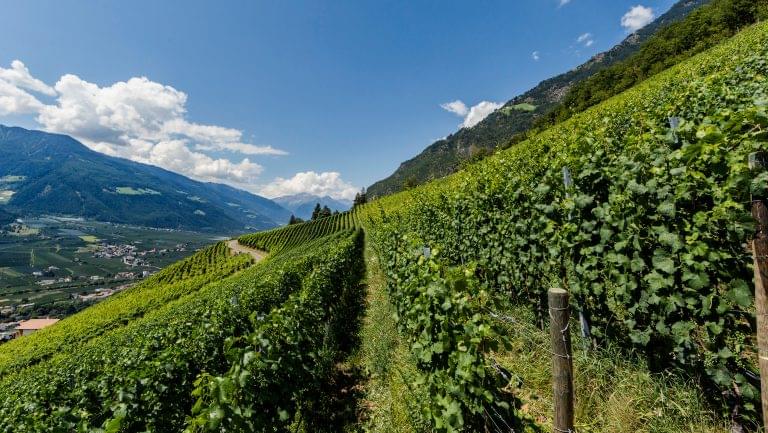
Enticing Customers with Alpine Wines
The recognizable international grapes and intriguing indigenous varieties grown in Alto Adige make the region a huge asset to any wine list or retail selection. Matta-Aliah, for instance, always looks to Alto Adige when she’s looking for a quality example of one of the best-selling grapes in the U.S. “One of the things I always say is, because of the popularity of Pinot Grigio, you need to have it on your list,” she says. “Alto Adige is one of the areas where you can put a Pinot Grigio on your list and actually get behind it.”
But at the same time, there’s something for adventurous wine drinkers. “You’re also worried about the geek factor—that 20 percent who want to drink something really different,” says Gaiser. “It doesn’t get better than Lagrein and Schiava.” Alto Adige is one of the few places in Italy where wines are routinely varietally labeled, so consumers can easily identify these less common varieties.
White wines, which make up 62 percent of the region’s total production, have plenty to offer, particularly for by-the-glass lists. Though there’s some focus on aging these wines, most Alto Adige whites are meant to be drunk when young and fresh because of their bright fruit aromas and flavors. “You’re always trying to find wine that you can put in the glass and drink right now,” says Gaiser. “Alto Adige wines hit it out of the park.” These wines also tend to be quite versatile, satisfying many palate preferences. “One of my favorite white wines from Alto Adige is Pinot Bianco,” says Matta-Aliah. “I call it the gateway grape because if you like Chardonnay, you can like Pinot Bianco. If you like Sauvignon Blanc, you can like Pinot Bianco. You can come to it from a lot of places.”
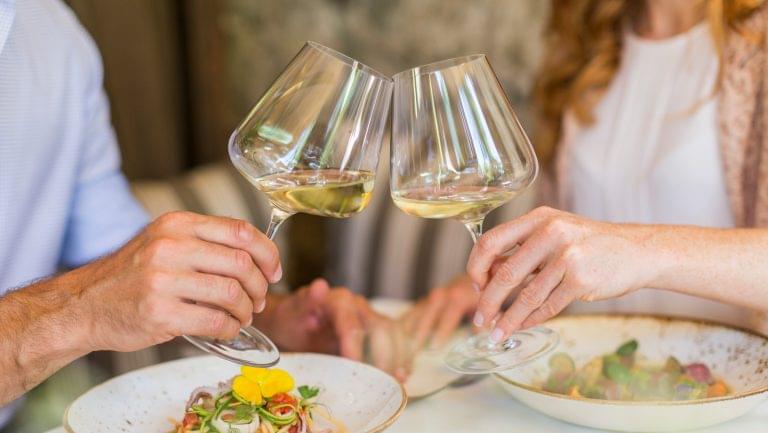
Working Toward a Sustainable Future
Much of Alto Adige’s wine industry is made up of multigenerational wine families that have been invested in the region for decades, or even centuries; the region’s vineyards are tended by about 5,000 families of winegrowers, many of whom own only a few acres. Because of their small vineyard holdings, most have banded together into quality-minded cooperatives that produce 70 percent of the region’s wine—the rest is made by independent winegrowers and estates.
With an eye toward future generations of Alto Adige growers and winemakers, these families work their land with sustainability in mind. About 7 to 8 percent of Alto Adige’s farms have organic certification, and some of Italy’s pioneers in the biodynamic movement come from the region.
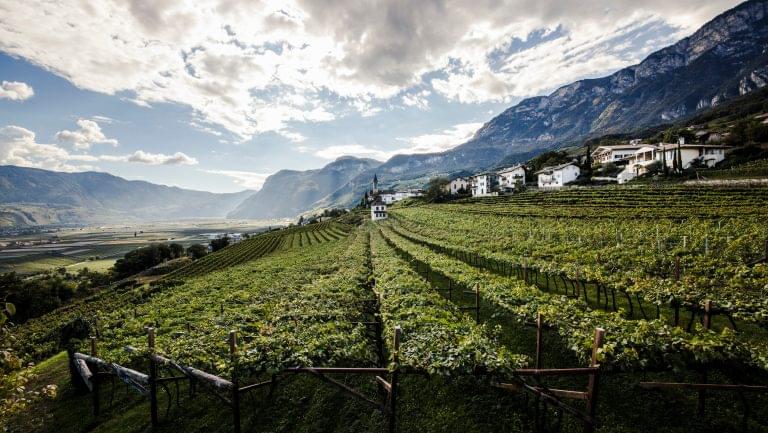
But Eduard Bernhart, the director of the Wines of Alto Adige consortium, doesn’t believe labels and certifications are as important as the philosophy of local growers. “I think if 2,500 years ago our ancestors were [making] wine, and still we are [making] wine, we did something really right,” he says. “We still have farmers and families that educate their children to do this job. If we can protect our environment and give our property and our knowledge to the next generation, hopefully they will still cultivate the vines and contribute to our way of life.”
Throughout history, Alto Adige’s vintners have harnessed the region’s climate, soils, topography, and native grape varieties to form the thriving wine industry in northern Italy; so too will today’s winegrowers work to heighten quality for many years to come.

Dispatch
Sign up for our award-winning newsletter
Don’t miss the latest drinks industry news and insights—delivered to your inbox every week.



